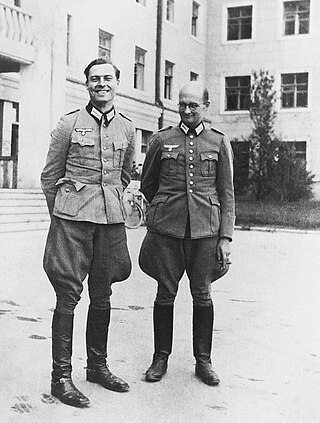
Claus von Stauffenberg was a German army officer who is best known for his failed attempt on 20 July 1944 to assassinate Adolf Hitler at the Wolf's Lair.
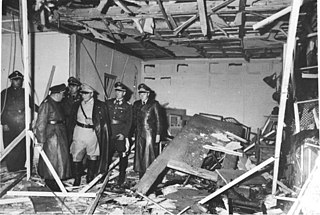
The 20 July plot was a failed attempt to assassinate Adolf Hitler, the chancellor and leader of Nazi Germany, and subsequently to overthrow the Nazi regime on 20 July 1944. The plotters were part of the German resistance, mainly composed of Wehrmacht officers. The leader of the conspiracy, Claus von Stauffenberg, planned to kill Hitler by detonating an explosive hidden in a briefcase. However, due to the location of the bomb at the time of detonation, the blast only dealt Hitler minor injuries. The planners' subsequent coup attempt also failed and resulted in a purge of the Wehrmacht.

Job Wilhelm Georg Erdmann Erwin von Witzleben was a German Generalfeldmarschall in the Wehrmacht during the Second World War. A leading conspirator in the 20 July plot to assassinate Adolf Hitler, he was designated to become Commander-in-Chief of the Wehrmacht in a post-Nazi regime had the plot succeeded.
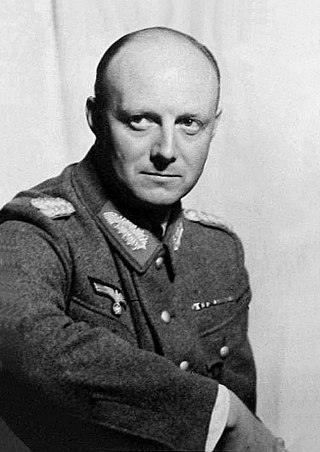
Henning Hermann Karl Robert von Tresckow was a German military officer with the rank of major general in the German Army who helped organize German resistance against Adolf Hitler. He attempted to assassinate Hitler on 13 March 1943 and drafted the Valkyrie plan for a coup against the German government. He was described by the Gestapo as the "prime mover" behind the plot of 20 July 1944 to assassinate Hitler. He committed suicide at Królowy Most on the Eastern Front upon learning of the plot's failure.
Operation Spark was the code name for the planned assassination of Nazi dictator Adolf Hitler by the anti-Nazi conspiracy of German Army officers and political conservatives, known as the Schwarze Kapelle during World War II. The name was coined by Major General Henning von Tresckow in 1941. He believed that because of Hitler's many successes up to that time, his personal charisma, and the oath of personal loyalty to him sworn by all German army officers, it would be impossible to overthrow Hitler and the Nazis with Hitler still alive. Hitler's death, however, would be a "spark"—a signal that it was time to launch an internal coup d'état to overthrow the Nazi regime and end the war.
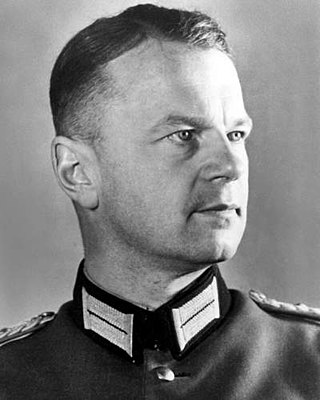
Hasso von Boehmer was a German lieutenant colonel on the General Staff and one of the 20 July Plotters.

Fritz-Dietlof Graf von der Schulenburg was a German government official and a member of the German Resistance in the 20 July Plot against Adolf Hitler.

Axel Ernst-August Clamor Franz Albrecht Erich Leo Freiherr von dem Bussche-Streithorst was a German officer during World War II and was a member of the German Resistance. He planned to assassinate Adolf Hitler in coordination with Claus von Stauffenberg in November 1943 at the Wolfsschanze.

The House of Schulenburg is the name of an old German noble family that goes back to 13th century. Members of the family held the title of Imperial Count. They had multiple political and military roles in the history of Germany and Great Britain.
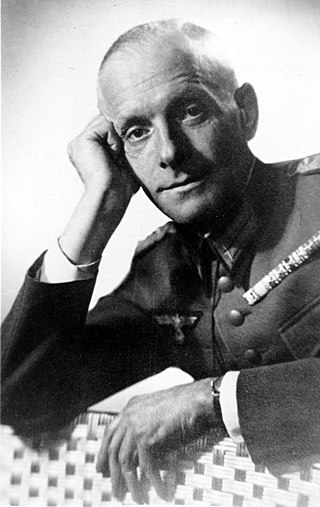
The Oster Conspiracy of 1938 was a proposed plan to overthrow German Führer Adolf Hitler and the Nazi regime if Germany went to war with Czechoslovakia over the Sudetenland. It was led by Generalmajor Hans Oster, deputy head of the Abwehr and other high-ranking conservatives within the Wehrmacht who opposed the regime for behavior that was threatening to bring Germany into a war that they believed it was not ready to fight. They planned to overthrow Hitler and the Nazi regime through a storming of the Reich Chancellery by forces loyal to the plot to take control of the government, who would either arrest or assassinate Hitler, and restore the Monarchy under Prince Wilhelm of Prussia, the grandson of Wilhelm II.
This is the German Army order of battle on the outbreak of World War I in August 1914.
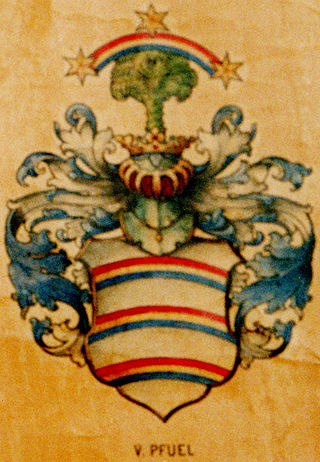
The Pfuel family is an ancient German noble family that arrived to Brandenburg in the year 926 and later widened their influence to Saxony, Saxony-Anhalt, Mecklenburg, Pomerania, Württemberg, Westphalia, Eastern Europe and Sweden.
The Royal Bavarian Life Guards was a household, life guard (bodyguard) regiment of the Bavarian kings from the end of the Napoleonic Wars until the fall of the Wittelsbach monarchy and the subsequent disbanding of the Bavarian army.

Colonel Georg Alexander Hansen was an Oberst (Colonel) in the Generalstab and one of the participants in the German Resistance against the Nazis.
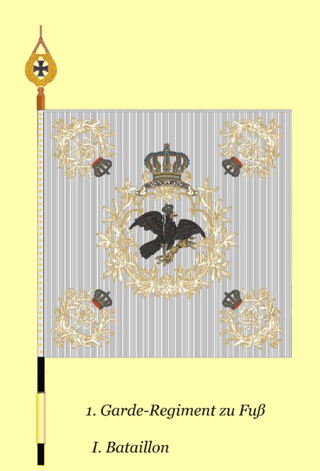
The 1st Foot Guard Regiment was an infantry regiment of the Royal Prussian Army formed in 1806 after Napoleon defeated Prussia in the Battle of Jena–Auerstedt. It was formed by combining all previous Foot Guard Regiments, especially the 6th and the 15th Infantry Regiments of the Old Prussian Army, the former were the famous Potsdam Giants of Frederick William I of Prussia, the latter was commanded and led by Frederick the Great as his life guard, and was, from its inception, the bodyguard-regiment of Kings of Prussia. Save William II, who also wore the uniforms of other regiments, all Prussian Kings and most Princes of Prussia wore the uniform of the 1st Foot Guard Regiment. All Princes of Prussia were commissioned lieutenants in the 1st Foot Guards upon their tenth birthdays. The King of Prussia was also the Colonel-in-chief of the regiment, as well as the Chief of the 1st Battalion and 1st Company of the regiment. Therefore, the regiment held the highest rank within the Prussian Army, which, among other things, meant that the officer corps of the regiment marched before the princes of the German Empire and the diplomatic corps in the traditional New Year's reception. Unofficially, the regiment was known as the "First Regiment of Christendom".
Joachim Freiherr von Willisen was a German public official and member of the Resistance against the Nazi régime.

Margarethe von Oven was a secretary in the Bendlerblock and an accomplice in the 20 July plot to assassinate Adolf Hitler.

Kurt Freiherr von Plettenberg was a German forester, cavalry officer and a member of the German Resistance (Widerstand). He was involved in the preparations for the 20 July plot, an attempt to assassinate Adolf Hitler, Führer of the Third Reich. Plettenberg belonged to the circle of close friends which included Claus Schenk Graf von Stauffenberg, Johannes Popitz, Ludwig Beck, Ulrich von Hassell, Carl-Hans Graf von Hardenberg and Fabian von Schlabrendorff.
Friedrich Bernhard Karl Gustav Ulrich Erich Graf von der Schulenburg was a Prussian General during World War I and a member of the Nazi Party during the inter-war period.













